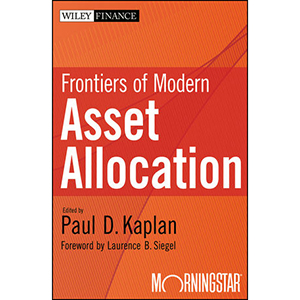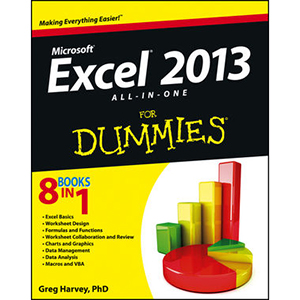Frontiers of Modern Asset Allocation

Innovative approaches to putting asset allocation into practice
Building on more than 15 years of asset-allocation research, Paul D. Kaplan, who led the development of the methodologies behind the Morningstar Rating(TM) and the Morningstar Style Box(TM), tackles key challenges investor professionals face when putting asset-allocation theory into practice. This book addresses common issues such as:
- How should asset classes be defined?
- Should equities be divided into asset classes based on investment style, geography, or other factors?
- Should asset classes be represented by market-cap-weighted indexes or should other principles, such as fundamental weights, be used?
- How do actively managed funds fit into asset-class mixes?
Kaplan also interviews industry luminaries who have greatly influenced the evolution of asset allocation, including Harry Markowitz, Roger Ibbotson, and the late Benoit Mandelbrot. Throughout the book, Kaplan explains allocation theory, creates new strategies, and corrects common misconceptions, offering original insights and analysis. He includes three appendices that put theory into action with technical details for new asset-allocation frameworks, including the next generation of portfolio construction tools, which Kaplan dubs “Markowitz 2.0.”
Table of Contents
Part I: Equities
Chapter 1. Purity of Purpose: How Style-Pure Indexes Provide Useful Insights
Chapter 2. Investing in Europe with Style: Why Investors in Europe Would Benefit From Constructing Portfolios Through the Prism of Style
Chapter 3. Why Fundamental Indexation Might—or Might Not—Work
Chapter 4. The Fundamental Debate: Two Experts Square Off on the Big Issues Surrounding Fundamentally Weighted Indexes
Chapter 5. Collared Weighting: A Hybrid Approach to Indexing
Chapter 6. Yield to Investors? A Practical Approach to Building Dividend Indexes
Chapter 7. Holdings-Based and Returns-Based Style Models
Chapter 8. Estimates of Small Stock Betas Are Much Too Low
Chapter 9. A Macroeconomic Model of the Equity Risk Premium
Part II: Fixed Income, Real Estate, and Alternatives
Chapter 10. Good and Bad Monetary Economics, and Why Investors Need to Know the Difference
Chapter 11. Inflation, Gilt Yields, and Economic Policy
Chapter 12. Reverse Mean-Variance Optimization for Real Estate Asset-Allocation Parameters
Chapter 13. The Long and Short of Commodity Indexes
Chapter 14. Less Alpha and More Beta Than Meets the Eye
Chapter 15. Venture Capital and its Role in Strategic Asset Allocation
Part III: Crashes and Fat Tails
Chapter 16. One-and-a-Quarter Centuries of Stock Market Drawdowns
Chapter 17. Stock Market Bubbles and Crashes: A Global Historical and Economic Perspective
Chapter 18. De´ ja` Vu All Over Again
Chapter 19. De´ ja` Vu Around the World
Chapter 20. Getting a Read on Risk: A Discussion with Roger Ibbotson, George Cooper, and Benoˆıt Mandelbrot on the Crisis and Risk Models
Part IV: Doing Asset Allocation
Chapter 21. Does Asset-Allocation Policy Explain 40 Percent, 90 Percent, or 100 Percent of Performance?
Chapter 22. Asset-Allocation Models Using the Markowitz Approach
Chapter 23. Asset Allocation with Annuities for Retirement Income Management
Chapter 24. MPT Put Through the Wringer: A Debate Between Steven Fox and Michael Falk
Chapter 25. Updating Monte Carlo Simulation for the Twenty-First Century
Chapter 26. Markowitz 2.0
Chapter 27. What Does Harry Markowitz Think? A Discussion with Harry Markowitz and Sam Savage
Book Details
- Hardcover: 384 pages
- Publisher: Wiley (December 2011)
- Language: English
- ISBN-10: 1118115066
- ISBN-13: 978-1118115060














